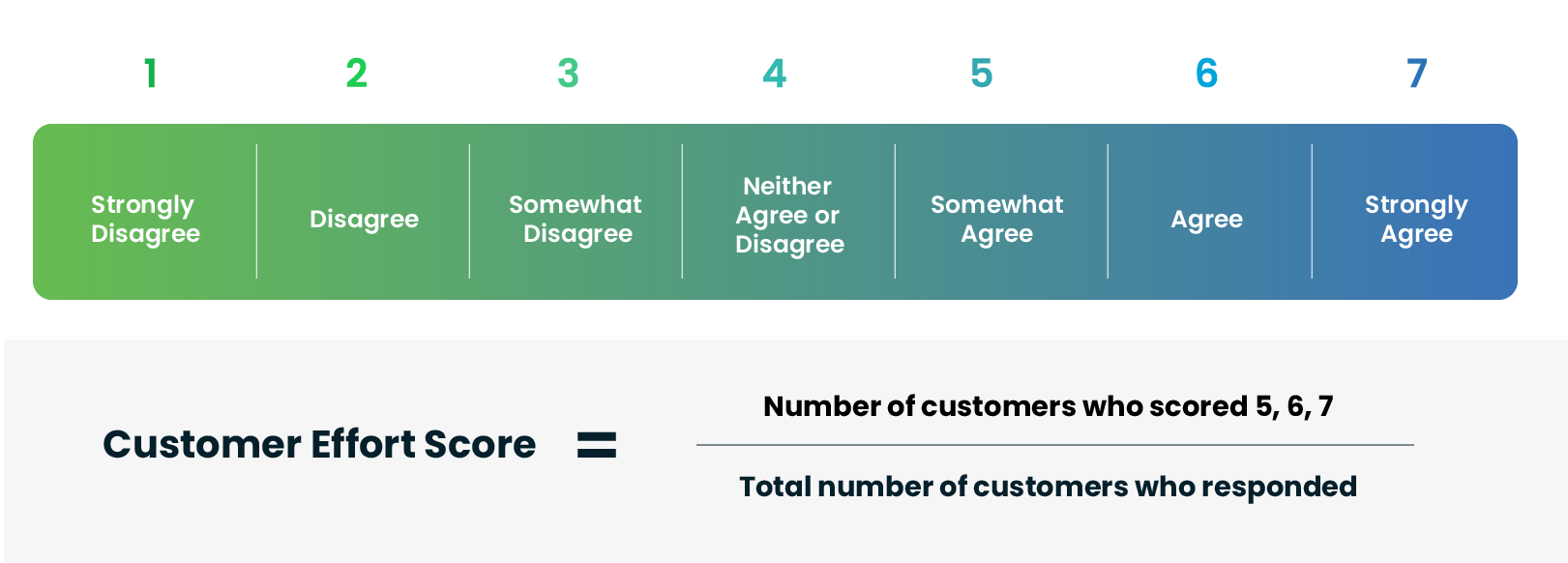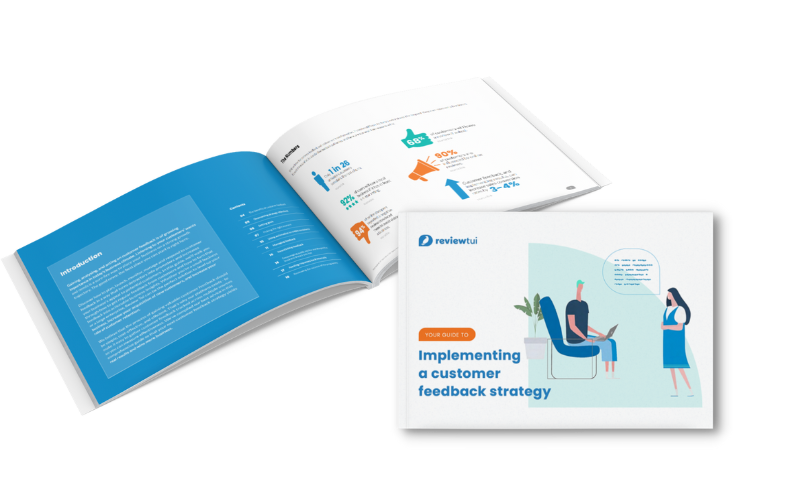Customer Effort Score (CES)
Finding your Customer Effort Score (CES) is as simple as asking how easy your customers found a certain interaction. The lower the score, the less effort is required to solve the issue. This indicates a better experience and higher customer satisfaction. Review Tui makes gathering this information easy by enabling you to ask the questions that matter.
.png?width=400&height=265&name=Humaaans%20-%201%20Character%20(1).png)
What is a Customer Effort Score (CES)?
A customer effort score (CES) is a metric that quantifies the level of effort customers needed to use to complete a task related to your business. This can include the effort required to find assistance, answers or instructions. It can encompass onboarding your solution or adopting a new way of working. Its breadth of application is almost limitless and can give essential insights as to how much friction exists in a business's current way of working, and where the customer's experience can be easily improved.
Addressed within a small online customer survey the respondent ranks the effort required to complete said task on a sliding scale. The range of the scale can be customised, with many businesses using a 1-10 range. However, popular surveying group Gartner has proposed a 1-7 scale, which is proving quite popular. The customer effort score is a more focused and specific service metric than CSAT and NPS® as it focuses on a particular activity and asks the individual whether completing this task was more or less effort than expected.
The customer effort score question that's asked is: [Company name] made it easy to [task]. The response is gauged on the level of agreement with that statement.
Variations on the customer effort score question include:
- On a scale of 1 to 7, with 1 being 'strongly disagree' and 7 being 'strongly agree' how easy was it to [task]?
- How easy did you find it to [task]? Note; with this question the scale changes to 'not at all easy' at 1 and ' incredibly easy' or 'easier than expected' at 7
- How challenging did you find [task]?
In all iterations of the customer effort score question, it's important that the lowest end of the spectrum represents a lot of effort and the top represents the least amount of effort. While synonyms are acceptable it is effort that is being gauged and the score is only useful if the question asks the respondent to assess this.

Calculate your CES
If you want to calculate your Customer Effort Score, using the new Gartner 7-point scale, the calculation is as follows:
- Low effort customers - scores of 5,6, and 7
- Divided by total responses
Low effort responses ➗ Total responses = CES
Why use a customer effort score?
CES enables businesses to hone in on friction areas within their customer's experience. From using products and finding help to customer support's ability to troubleshoot an issue the score is all-encompassing. It gives you a benchmark to improve upon and, as a result, enhance the customer experience for the better. Learn more about why customer effort scores are so useful in our article.
What's a good customer effort score?
CES is harder to benchmark than the likes of NPS® because the question is focused on completing a specific task. Therefore it's better to track internal benchmarks and improvement metrics. For example, the users scoring 4,5, and 6 are not yet enjoying a seamless experience performing that task. How can you shift more of those users up the scoring chart?
.png)
Review Tui & CES
.png)
Surveys
CES is an indicator of how effortless your business makes handling a problem or issue. Our intuitive mobile surveys make this easy.

Score
Your Customer Effort Score is easily viewable on your cloud-based dashboard. Setup multiple score modules to compare results.

Seamless
Send customers links to your surveys through your existing channels. Reduce tech-stack clutter by working with what you have.

Customer feedback strategy guide
Develop your very own customer feedback strategy with our free digital guide. From winning over senior management to identifying the moments in the customer's journey for valuable feedback this guide is packed with advice. Learn the framework required to get consistent and insightful customer feedback and how to implement it across your business quickly.
Surveys
Easy online surveys
CES software can be used as an indicator of how much effort your customers are putting in with you, your products and your services. It’s usually based on one qualitative question and uses a sliding scale input.
Review Tui enables respondents to rank their experience using a variety of answer types, so customers can quickly show you how you're doing! Not only that but we have a range of question types on offer so you can bolster the feedback you receive. Draggable questions enable users to rank answers in priority order, for example. These engaging question types go beyond the standard day-to-day surveys to increase engagement. Every survey is mobile optimised too.
.png?width=280&height=400&name=Humaaans%20-%20Phone%20(1).png)

Score
Build CES analytics
Track the Customer Effort Scores gathered from your Review Tui survey to an individual touchpoint.
The cloud-based dashboard shows you overall scores while enabling you to drill down into individual responses or trends among surveys and campaigns. A campaign is a unique link tagging system that enables you to group responses by location, person or channel to find out where the sticking points are in your customer experiences.
Seamless
Use your existing tech-stack
With a CES survey typically asking only 1 question, you may think there's not much data to gather...
We've got news for you! Review Tui enables you to gather information outside of just the basic score. You can track, measure, and analyse where and how they took the survey, which survey delivery method yields a higher response rate, and even which of your staff members are higher performing than others! Ask respondents additional questions and link Review Tui to HubSpot to get even deeper insights.
Use your existing website chats, email platforms and digital assets to deliver easy customer feedback surveys.





